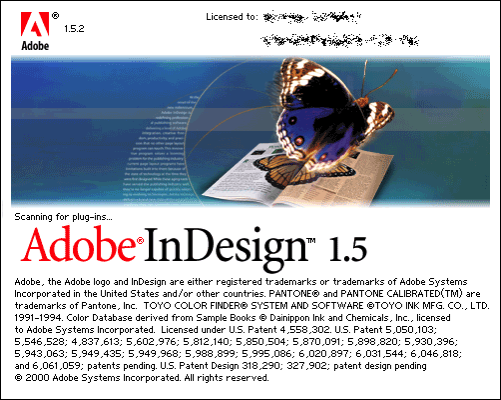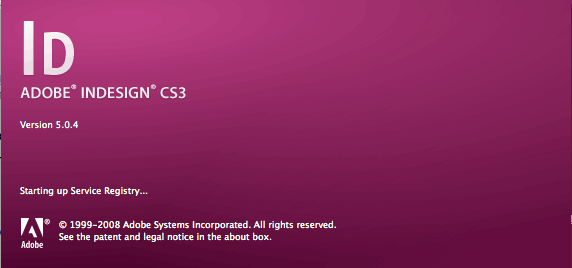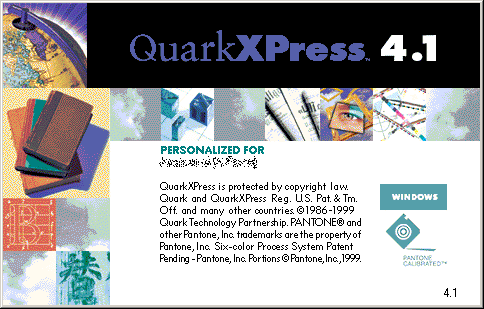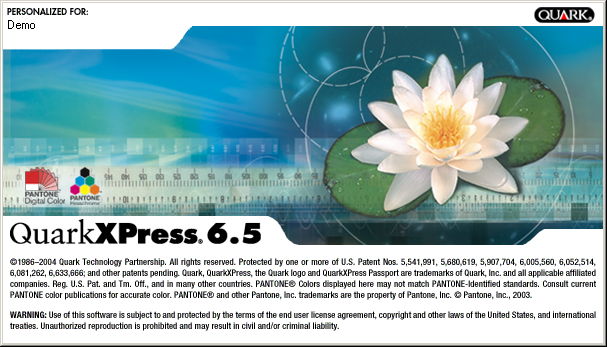What happened to Quark? How XPress lost the battle to InDesign
By the mid 2000s, XPress – Quark, Inc's pioneering page layout application – had gone from commanding 95 percent of the market to just 25 percent. We look into why.
Our culture is full of iconic struggles between mismatched foes who fought bravely for supremacy through incredible odds. Along with David vs Goliath, the RAF vs the Luftwaffe and the Jedi vs the Sith, Quark and Adobe spent years battling it out for the hearts and minds of the electronic page layout market.
Both XPress and InDesign are still around today, albeit looking vastly different than they did back then. And while their markets are vaguely similar, and we list Quark as one of our favourite InDesign alternatives, they don't share much direct turf anymore, making it even harder to believe the life and death struggle they were once locked in, a story of changing fortunes as gripping as any historical epic.
Here, we look back at the battle between Quark and InDesign...
Seeds of the revolution – 1982

It all started with former Xerox staffers John Warnock and Charles Geschke. Just like their employers saw no value in the mouse and graphic user interface and sold them to Apple for a song, Xerox committed another historic blunder in refusing to back Warnock and Geschke's idea for a programming language to print from a computer directly to a small print device.
The pair left to form Adobe in 1982 and, along with their senior engineers and programmers, created that language – Postscript – themselves.

The missing link
Around the same time, Steve Jobs had been talking to Canon about an office-based laser print device the imaging company had in development. He realised Postscript was the missing link, licensed it for printing from Apple computers to the newly minted Apple Laserwriter, and the desktop publishing revolution was born.
It prompted the largest skills shift in publishing since the Linotype machine had first appeared over a century before. During the early '90s, generations of old school artisans used to hunching over compositing desks retrained on desktop publishing systems in a big hurry or were let go, often in the space of a year or less.
Daily design news, reviews, how-tos and more, as picked by the editors.
Ironically, considering its later success, Adobe wasn't the first to capitalise on digital page design on a wide scale. A software vendor called Aldus (also responsible for the TIFF image file format) was enjoying the lion's share of the emerging market with PageMaker, the page layout application it launched in 1985.

Adobe joins the fray
Even though it had virtually created the industry, Adobe had nothing to offer apart from the underlying programming structure, so a marriage with PageMaker made perfect sense, the company buying Aldus in 1994.
But another company called Quark also struck while the Postscript iron was hot. After releasing the first word processor for the Apple III (Word Juggler) in the early '80s, Quark released XPress, its page layout application, in 1986.

Unlike Aldus' strategy with PageMaker, Quark spoke directly to designers, using terms they knew from the analogue era like kerning, colour separations and trapping that made human operators comfortable going digital.
Quark captures the flag – 1990
It was an industry-capturing masterstroke. XPress soon became the de facto standard page layout tool on the Mac under Classic Mac operating systems five to nine (1987-1999). PageMaker made more inroads into the corporate sphere, slowly fading out of the picture before the last version shipped in 2001 and Adobe stopped development support in 2004.

QuarkXPress became a second language for the first generation of digital graphic designers. Every job ad in the classifieds mentioned the holy trilogy of skills you needed – XPress, Photoshop and Illustrator.
And with the page layout market almost completely to itself, the company behaved in ways many of us would consider predictable of a market monopoly.
The very steep asking price hovered around $2,000 (£1,600) and desperately needed features went overlooked. The most glaring was the conspicuous absence of a tool to collect fonts for output, which we had to manage with third party utilities like Magpie, a software product so niche and obscure you can't even find reference to it online anymore.

Jostling for supremacy – 1999
High price, a lack of updates (more on that below) and an arrogant stance towards users made the field ripe for an aggressive competitor, and that's exactly what Quark got in InDesign.
Adobe held a respectable slice of the market thanks to image tools Illustrator and Photoshop, it just couldn't make a dent in page layout.
Whether it was programming constraints or a symptom of each company's regard for each other, cross-border software support was also virtually non-existent.

For example, Quark recognised only non-proprietary image formats such as .tiff and .eps, and those of us around during those days remember the agonising process of placing a .tiff file, going back to Photoshop to make tweaks, resaving it and placing it again. The days of your layout updating automatically every time you resaved the native image file were far off.
A new assault
So while it's hard to attribute the terms 'good' or 'evil' to either player, InDesign was definitely the metaphorical rebel attack on the Death Star.

Released with a flourish in 1999, Indesign's USP was being the first page layout application native to Apple's shiny new Unix-based operating system, OS X, in 2002.
Rather than repackage and expand PageMaker, Adobe took a whole new approach to K2, the Himalayan-themed name given to the developmental beta.
InDesign is object-oriented, the application itself just a small central kernel of code with other functions all programmed as modular plug-ins. Some people (maybe Quark propaganda) were dismissive, considering it just a multi-page version of Illustrator with font libraries and Postscript engines added in, but that was actually InDesign's strength – it shortened the development cycle for new features.

All in the code
By contrast, the XPress codebase was a monolith, a black box where adding or removing features meant extensive and time consuming reprogramming from the ground up.
So yes, it might have been arrogance, but adding a utility to collect fonts or getting rid of the laser gun-wielding alien (Google 'QuarkXPress Easter eggs') might just have required too big an investment, especially when users didn't really have any alternative.
But Adobe was lucky as well as smart. Application development back then took a long time, and the company released InDesign to coincide with both the rise of Mac OSX and Quark's continuing complacency quite by accident.

The new battlefield – 2002
Quark tripped up badly when it came to OSX ...or was it more the case that design pros held back on OSX because of Quark?
With the introduction of the iMac in 1998, Apple branched into the consumer mainstream. It was already in secretive development of the gadget that would help it not only capture a whole new consumer sector but put it on track to becoming the most valuable company in history, the iPod.

But among creative professionals, OSX might not have enjoyed such wide and early adoption if not for the droves of users moving to the cheaper, leaner InDesign.
X marks the spot
By the time OSX came out in 2002, Quark was already deep into development of version 5, which would still only be available for the Mac Classic operating systems, and the architecture to port it to OSX was further away still.
Decision makers at Quark also wagered that the print and publishing industry would be as slow to catch on as they were. Quark knew from past experience it often took years for large print vendors to adopt expensive new technology platforms – even by the end of the 2000s, many still used software environments that predated OSX.

It learned its lesson years later when the war had been won, incidentally, pulling out all stops to become the industry leader in OS compatibility. When Apple moved from Motorola to IBM chips across 2006/2007, XPress was available in compatible binary versions in both 32 and 64 bit before any other page layout tool – including InDesign.
Behind the 8 ball
Quark released the long-overdue XPress 5 in 2002, and it had been the longest gap between versions. Since 1997's version 4 there'd only been one update issued, version 4.1 in 1999.

XPress 5 was ultimately disappointing and that didn't help consolidate Quark's position, but to make matters worse, Adobe was preparing a decisive new assault.
In 2003 it launched Creative Suite, giving us a very compelling reason to buy InDesign. Not only did it come bundled with the other applications we already used (Photoshop and Illustrator), it cost just a little more than half the price of QuarkXPress alone.

A declaration of war
Creative Suite was Adobe's D-Day landing. After surrounding the seemingly unassailable fortress of Quark's customer base, now the San Jose-based company was launching a full scale invasion.
News from the media industry throughout 2002-04 increasingly reported one large corporate or media publisher after another dumping XPress for InDesign, the cost and the familiarity with Illustrator working in the Adobe's favour.

Quark struggled on with the slightly more mature version 6 a year later (there were some new features but export to HTML was still awful), but Adobe struck another blow, one that would ultimately prove fatal.
How the web was won – 2005
By 2003 the internet was fully mainstream, and designers were starting to play with tools that let us rather than software engineers build websites.
The XPress-Illustrator-Photoshop skillset sought by studios and agencies had been replaced by the Creative Suite-Dreamweaver duopoly, and Adobe's 2005 acquisition of Macromedia bought even more tools into a single purchase from version 3 onwards, including now-critical applications like Dreamweaver, Fireworks and Flash.

Suddenly agencies and publishers could buy every application they could possibly need to run a graphic design, web development and video editing studio – 14 products in all – for a little over $1,900 (£1,500).
Even without taking the changing capabilities of digital technology into account, the same thing would have cost tens of thousands of dollars just a handful of years earlier.

What goes around...
So where Adobe was once the small, nimble rebel, the tables had well and truly turned. Quark survived but was a shadow of its former self, so the company recast itself as a responsive, user-friendly software vendor.
Chief among them was a dramatic price drop of almost 50 percent with XPress 7, released in 2006. But subtler still was a change of direction. Perhaps realising it had no hope of competing with Adobe in creative publishing layout anymore, Quark rebuilt itself.

A big part of that was the 2008 release of DPS (dynamic publishing solution), an XML-based workflow to automate design across all media. At the time, the company made pains to assure users the enterprise solution-based approach was compatible with both Adobe and Quark products equally.
New directions
After being abandoned by print and publishing users, Quark also turned to the corporate sector occupied by Aldus a generation before, pushing document management as much as creativity.

Today the company considers itself a content automation engine and publishing platform targeting industries from life sciences to manufacturing. XPress is only a tiny slice of its product offerings and it's quite unrecognisable from the old days, including features like editing images from right within the application environment and 1,500 free Google fonts included.
It's also – like Adobe's entire stable of products – a subscription, costing just US$250 (£200) a year, a far cry from the $1,800-2,100 (£1,500-1,700) days.

Head in the clouds
InDesign, of course, is still a central part of Creative Cloud, but like Quark once did, Adobe's lost a lot of the goodwill that comes from having solid products and being user friendly, dogged by continued (and perceived) bugs about its operation since it became a cloud-only outfit.
It's not hard to find designers even today who are still using a pre-Creative Cloud version of Creative Suite (2013's CS6 was the last one), either out of frustration with Creative Cloud or fear of what they've heard.
And they're not wrong. Researching the service when it was first released, I was flabbergasted how hard it was to find an answer to the simple question; will users only access Adobe applications online through a browser, or does Creative Cloud still download standalone programs direct to your local system?

Also – like many of my contemporaries – I thought dealing with fonts using Quark XPress was nightmarish. But trying to sort out the myriad ways Adobe applications now find, provision, activate and use fonts means many of us no longer fear hell.
View from today
So is Adobe now the monopoly player Quark once was? Is the company unconcerned with how user-unfriendly many product features are because it knows by now it has little to fear from the likes of Scribus, Quark itself or any number of other alternatives?

Maybe there's a programmer in a garage or spare room somewhere coding tomorrow's leaner, nimbler, more compelling page layout tool and history will only repeat itself.
Or is there even a page layout market left worth fighting over, the way the print media and publishing industries have shrunk? If this story had been written back in the era we're talking about it would have been laid out in XPress or InDesign, but you're reading it thanks to a CMS editor.

A whole new ball game
Even though both Quark and Adobe (as well as countless others) offer tools in web development and design, nobody apart from giant brands really design and code websites from the ground up anymore. The rest of use a theme editor like Wordpress, which is behind almost half the sites on the web.
And so, like the Linotype, VHS and the Altavista search engine, page layout might be a relic of yesteryear, the war between Quark and InDesign a manifestation of the peak print graphic design era and a saga the likes of which we'll never see again... Watch this space to find out.

After growing up knowing he wanted to change the world, Drew realised it was easier to write about other people changing it instead. He has experience writing about everything from pop culture to technology and everything in between, and has been published in media both on and offline all over the world.
